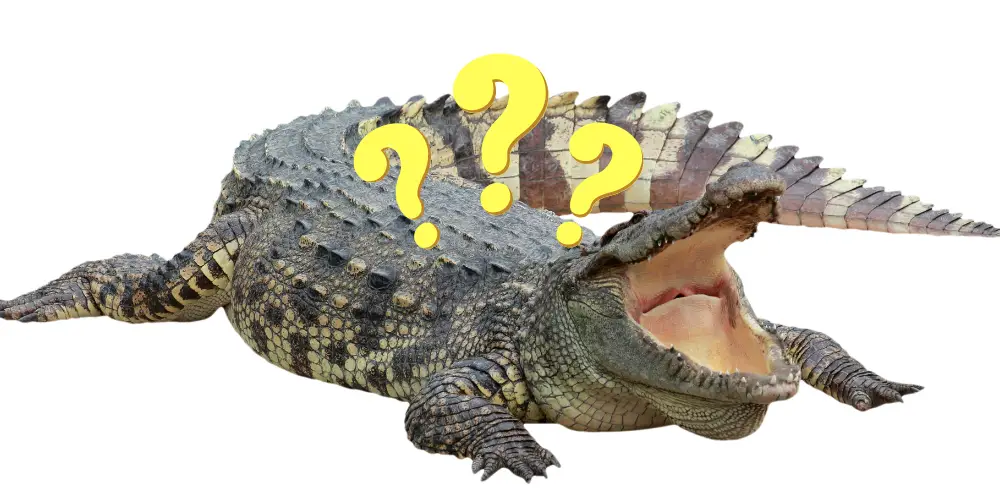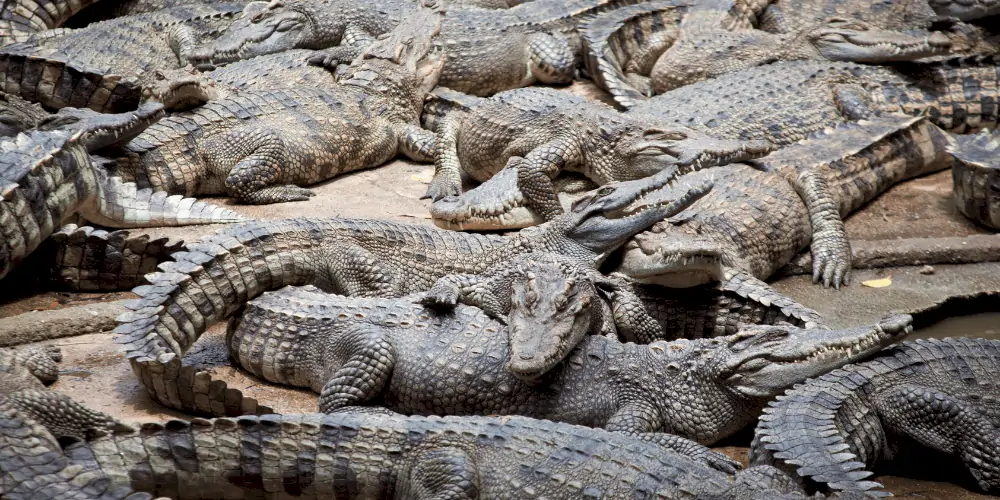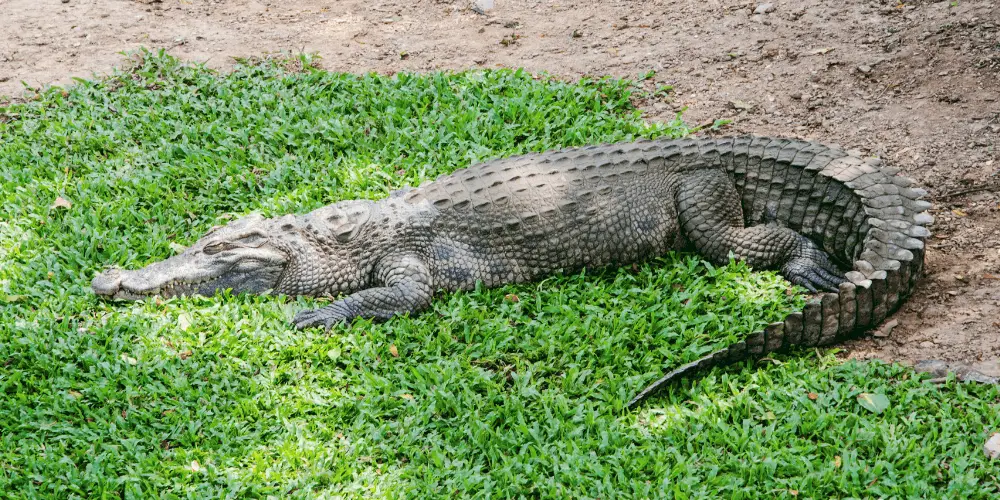If you’ve ever wondered, “Are crocodiles lizards, reptiles, or amphibians?” you’re not alone.
This question has perplexed many minds, and we’ll delve deep into this fascinating topic in this article.
So, are crocodiles lizards, reptiles, or amphibians?
Crocodiles are reptiles, not lizards or amphibians. They belong to the order Crocodilia, which is part of the class Reptilia.
Reptiles, including CROCODILES, snakes, LIZARDS, turtles, and tortoises, are ectothermic, have dry, scaly skin, and well-developed lungs, lay amniotic eggs, and reproduce through internal fertilization.
On the other hand, Amphibians belong to the class Amphibia and have moist, permeable skin, begin their life cycle with gills, and lay jelly-like eggs in water.
Lizards are also reptiles but belong to the order Squamata, a separate group that includes snakes and geckos.
Crocodiles’ Key Differences from Lizards and Amphibians

Crocodiles differ from lizards and amphibians in various ways, including their physical traits, behavior, and habitat:
- Physical Traits:
- Crocodiles have a four-chambered heart, making their circulatory system more efficient than the three-chambered heart found in most reptiles and amphibians.
- Due to their unique jaw structure, they have one of the strongest bites in the animal kingdom, with a bite force of over 3,000 pounds per square inch.
- Crocodiles possess specialized salt glands on their tongues that allow them to excrete excess salt from their bodies, making them well-adapted to living in saltwater environments, unlike lizards and amphibians.
- Behavior:
- The nest’s temperature determines the sex of crocodile hatchlings during incubation, whereas most reptiles and amphibians have genetic sex determination.
- Crocodiles exhibit parental care, with mothers guarding their nests and protecting their young for several months after hatching, which contrasts with most lizards and amphibians that exhibit little parental care.
- Habitat:
- Crocodiles inhabit many environments, from freshwater rivers and swamps to brackish coastal estuaries, and are more versatile in habitat than most lizards and amphibians.
What is a Reptile?
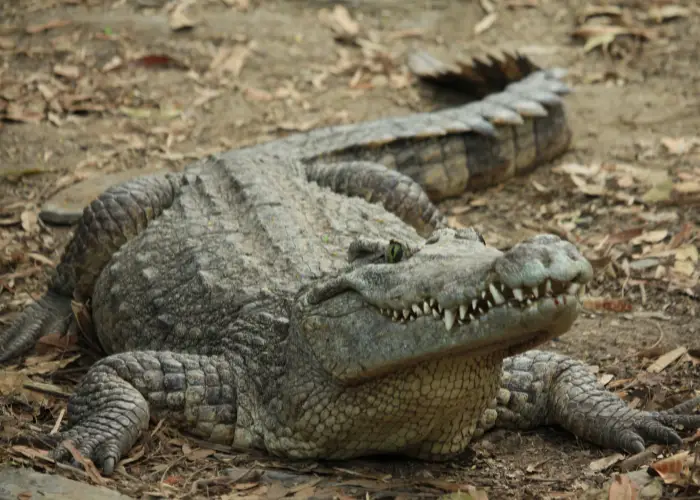
Reptiles are a diverse group of cold-blooded, egg-laying vertebrates characterized by their dry, scaly skin and well-developed lungs. They belong to the class Reptilia and include animals such as snakes, lizards, crocodiles, turtles, and tortoises.
These creatures can be found in various habitats worldwide, from tropical rainforests to arid deserts, and they have adapted to their environments in numerous ways. Here are some key features that define reptiles:
- Ectothermic: Reptiles are ectothermic or cold-blooded, which means they depend on external heat sources, such as the sun or warm surfaces, to maintain their body temperature. This differs from endothermic or warm-blooded animals, like mammals and birds, that can regulate their body temperature internally.
- Dry, Scaly Skin: One of the most recognizable features of reptiles is their dry, scaly skin. Their skin is covered with scales made of a tough, protective protein called keratin, which helps them retain water and avoid dehydration in dry environments. This characteristic sets reptiles apart from amphibians, with moist, permeable skin.
- Well-developed Lungs: Unlike amphibians, reptiles have well-developed lungs for respiration, allowing them to live exclusively on land without returning to the water for breathing. Some reptiles, like snakes, have only one functional lung, while others, like lizards and crocodiles, have two lungs.
- Amniotic Eggs: Reptiles lay amniotic eggs with a tough, leathery or hard shell that protects the developing embryo from desiccation and predation. These eggs contain a series of membranes and a fluid-filled amniotic sac, which provide the embryo with the necessary nutrients and a safe environment for development.
- Internal Fertilization: Reptiles reproduce through internal fertilization, meaning the male’s sperm is transferred directly into the female’s reproductive system. This reproduction method allows the fertilized eggs to develop within the safety of the eggshell, increasing the chances of survival for the offspring.
Exploring the World of Crocodiles
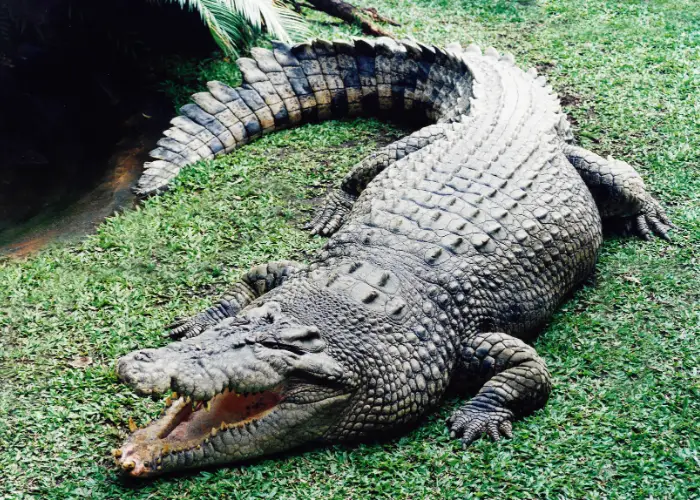
Crocodiles are fascinating creatures that have existed for millions of years.
But what exactly are they?
Let’s explore the taxonomy of these ancient animals to find out.
The Reptile Connection
As it turns out, crocodiles are indeed reptiles.
They belong to a group called “Crocodylia,” including alligators, caimans, and gharials.
But what makes them reptiles, and how do they differ from amphibians and lizards?
Reptiles vs. Amphibians: A Quick Overview
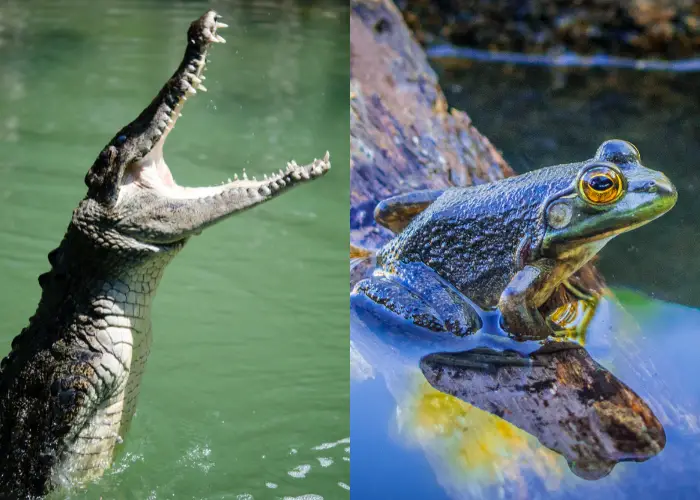
Reptiles and amphibians are cold-blooded vertebrates, but the two have key differences.
- Reptiles have a dry, scaly skin, while amphibians have moist, permeable skin.
- Reptiles also lay hard-shelled eggs or give birth to live young, whereas amphibians lay jelly-like eggs in water.
- Reptiles have lungs for breathing throughout their lives, while amphibians start with gills in their larval stage and eventually develop lungs.
So, based on these distinctions, we can confidently say that crocodiles are not amphibians.
How About Lizards? Are Crocodiles Lizards?
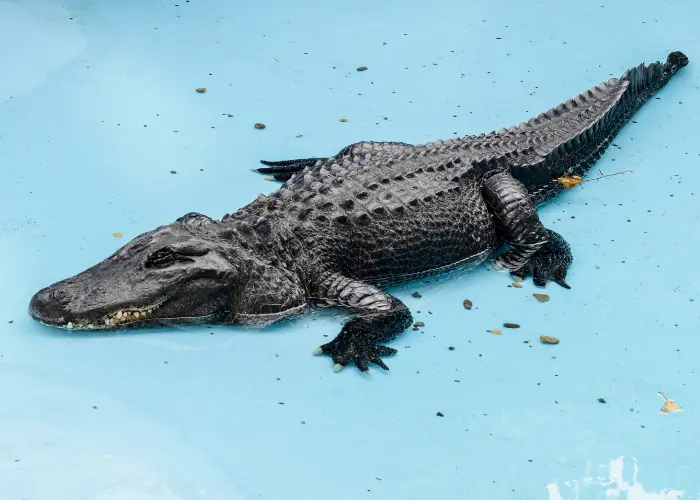
Lizards are also reptiles but belong to a separate “Squamata.”
This group includes snakes, skinks, and geckos, among others.
While both crocodiles and lizards are reptiles, they’re not closely related.
Crocodiles are more closely related to birds than to lizards. ( SEE REFERENCES )
Conclusion:
So, are crocodiles lizards, reptiles, or amphibians?
By now, you should clearly understand that crocodiles are reptiles, not lizards or amphibians.
We’ve explored their unique adaptations, fascinating behavior, and the conservation efforts in place to protect these ancient animals.
Hopefully, this deeper understanding will inspire greater appreciation and respect for these incredible creatures and their vital role in our ecosystems.
Frequently Asked Questions:
Are crocodiles more related to lizards or birds?
Crocodiles are more closely related to birds than lizards. Both crocodiles and birds belong to the group Archosauria, while lizards are part of the group Lepidosauria within the larger reptile classification.
CHECK OUT MORE CROCODILE TOPICS BELOW:
- Can Alligators and Crocodiles Climb Trees?
- Can Crocodiles Regrow Limbs?
- Are Crocodiles And Alligators Dinosaurs?
- How Fast Can a Crocodile Run?
- What is a Group of Crocodiles Called?
REFERENCES:
- Hedges, S. B., & Poling, L. L. (1999). A molecular phylogeny of reptiles. Science, 283(5404), 998-1001. DOI: 10.1126/science.283.5404.998 Link: https://science.sciencemag.org/content/283/5404/998
- Gauthier, J. A., Kluge, A. G., & Rowe, T. (1988). Amniote phylogeny and the importance of fossils. Cladistics, 4(2), 105-209. DOI: 10.1111/j.1096-0031.1988.tb00514.x Link: https://onlinelibrary.wiley.com/doi/abs/10.1111/j.1096-0031.1988.tb00514.x
- Reptile. (2023, April 15). In Wikipedia. https://en.wikipedia.org/wiki/Reptile
- Lizard. (2023, February 16). In Wikipedia. https://en.wikipedia.org/wiki/Lizard
- Amphibian. (2023, March 14). In Wikipedia. https://en.wikipedia.org/wiki/Amphibian

